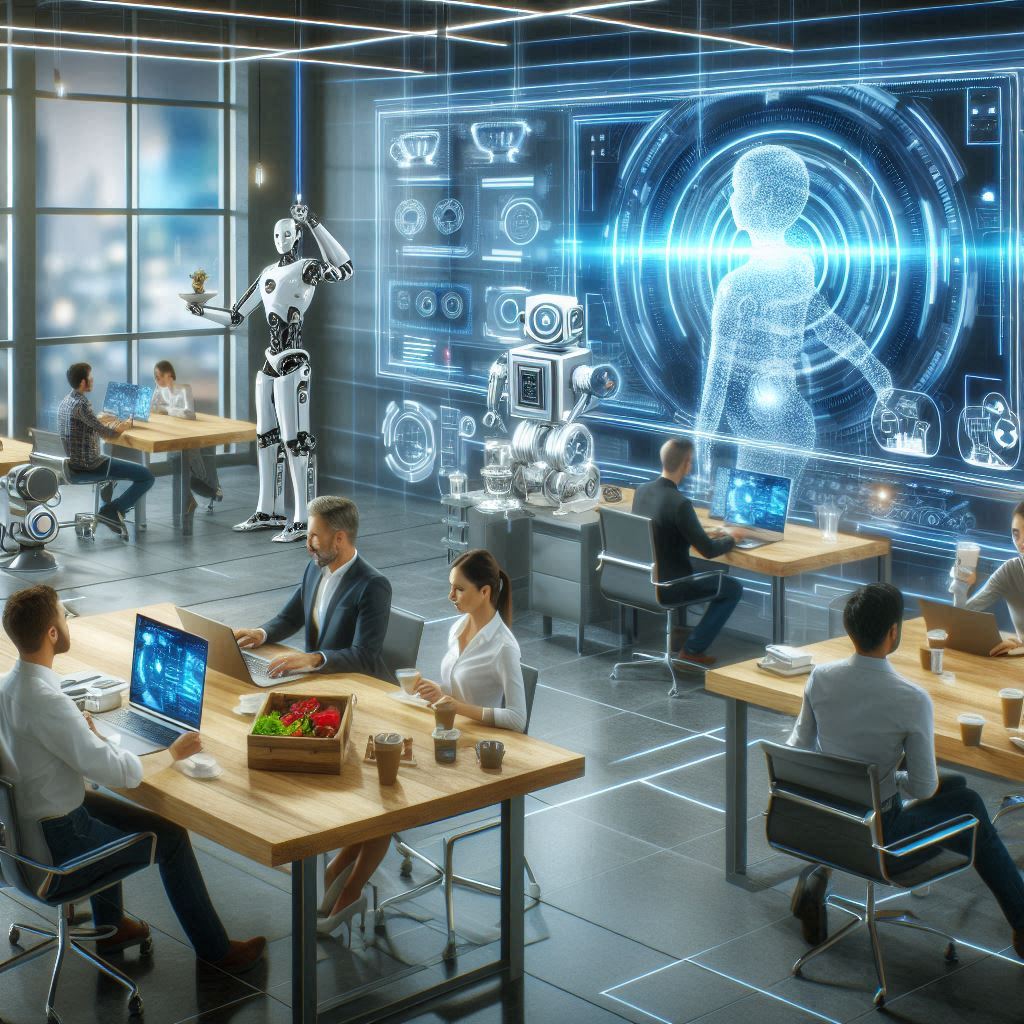The workplace is undergoing a significant transformation driven by rapid advancements in technology. Here are some key ways technology is reshaping the future of work:
Automation and AI
Automation and artificial intelligence (AI) are revolutionizing various industries by taking over repetitive and mundane tasks. This shift allows employees to focus on more complex and creative aspects of their jobs. For example, AI can handle data analysis, customer service inquiries, and even some aspects of decision-making. Companies are increasingly adopting AI-driven tools to enhance productivity and efficiency, leading to significant cost savings and improved service delivery.
Remote Work and Digital Collaboration
The COVID-19 pandemic accelerated the adoption of remote work, and it is likely to remain a significant part of the work culture. Digital collaboration tools like Zoom, Microsoft Teams, and Slack have become essential, enabling teams to work together seamlessly from different locations. These tools not only facilitate communication but also support project management and file sharing, making remote work more efficient and productive. The flexibility offered by remote work can lead to higher employee satisfaction and retention.
Gig Economy and Freelancing
The gig economy is expanding, with more people opting for freelance and contract work. Platforms like Upwork, Fiverr, and Uber have made it easier for individuals to find short-term work opportunities, offering flexibility and autonomy. This shift is changing the traditional employment model, allowing businesses to tap into a global talent pool and scale their workforce according to demand. Freelancers benefit from the ability to choose their projects and work schedules, leading to a more balanced work-life integration.
Skill Development and Lifelong Learning
As technology evolves, so do the skills required in the workplace. Continuous learning and upskilling are becoming crucial for career advancement. Online learning platforms like Coursera, Udemy, and LinkedIn Learning provide accessible resources for professionals to stay updated with the latest trends and skills. Employers are also investing in training programs to ensure their workforce remains competitive. Lifelong learning is becoming a norm, with employees taking proactive steps to enhance their knowledge and capabilities.
Enhanced Productivity Tools
Productivity tools powered by AI and machine learning are helping employees manage their time and tasks more efficiently. Tools like Trello, Asana, and Monday.com offer project management solutions that streamline workflows and improve productivity. These tools provide features such as task tracking, deadline reminders, and collaborative workspaces, enabling teams to stay organized and focused. The integration of AI in these tools can also provide insights and recommendations to optimize work processes.
Cybersecurity and Data Privacy
With the increase in digital operations, cybersecurity has become a top priority for businesses. Protecting sensitive data from cyber threats is essential, and companies are investing in advanced security measures to safeguard their information. This includes implementing robust firewalls, encryption, and multi-factor authentication. Regular security audits and employee training on data privacy practices are also critical to maintaining a secure digital environment.
Workplace Flexibility and Well-being
Technology is enabling more flexible work arrangements, such as hybrid work models, where employees split their time between the office and remote locations. This flexibility can improve work-life balance and overall well-being, leading to higher job satisfaction and productivity. Employers are recognizing the importance of mental health and well-being, offering wellness programs and resources to support their employees. Flexible work arrangements can also reduce commuting time and expenses, contributing to a more sustainable lifestyle.
Virtual and Augmented Reality
Virtual reality (VR) and augmented reality (AR) are being used for training, simulations, and even virtual meetings. These technologies provide immersive experiences that can enhance learning and collaboration. For instance, VR can simulate real-world scenarios for training purposes, allowing employees to practice skills in a safe environment. AR can overlay digital information onto the physical world, aiding in tasks such as equipment maintenance and remote assistance.
Data-Driven Decision Making
Big data and analytics are empowering businesses to make informed decisions based on real-time data. This approach helps companies optimize operations, understand customer behavior, and predict market trends. Data analytics tools can process vast amounts of information to identify patterns and insights, enabling businesses to make strategic decisions with greater confidence. The ability to leverage data effectively can provide a competitive edge in the market.
Sustainability and Green Technology
Sustainability is becoming a critical focus for many organizations. Green technologies and practices, such as energy-efficient systems and remote work, contribute to reducing the carbon footprint and promoting environmental responsibility. Companies are adopting sustainable practices in their operations, from reducing waste to using renewable energy sources. This not only benefits the environment but also enhances the company’s reputation and can lead to cost savings in the long run.
